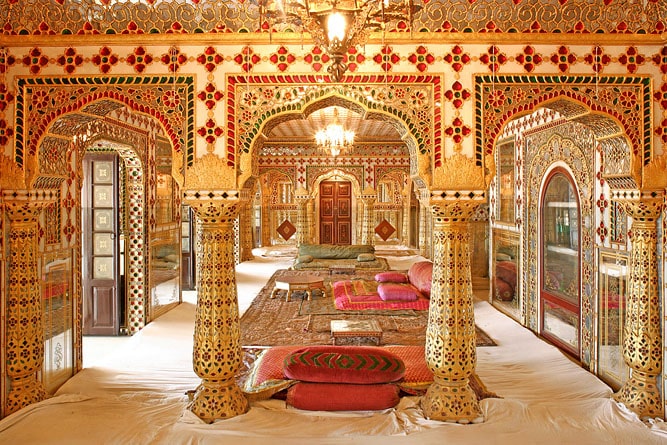City Palace, Jaipur
Palace in Jaipur
must-see attraction
Opening hours: 9:30am-5:00pm
Address: Tulsi Marg, Gangori Bazaar, J.D.A. Market, Pink City, Jaipur, Rajasthan
Ticket price: Indian/foreigner including camera ₹200/700, guide from ₹300, audio guide ₹200
Visit duration: People typically spend 1 to 2 hours here
Website: www.royaljaipur.in
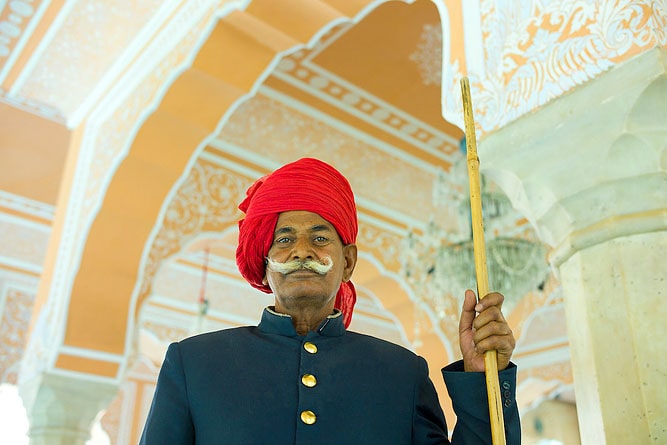
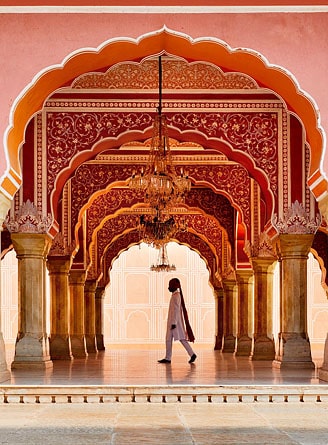
About the City Palace, Jaipur
Since medieval times, Jaipur is said to be one of the most well-planned cities to exist, since its foundation in 1727. Situated right in the middle of the city is the City Palace. It covers one-seventh parts of Old Jaipur and stands tall representing the rich history of the city.
Till 1949, the Maharaja of Jaipur used the Jaipur's City Palace as his administrative and ceremonial center. The palace has been extended and adapted across centuries which makes some parts of the complex as new as less than a century old.
The entire complex is portioned into distinct parts serving particular purposes. It houses large courtyards, lush gardens, pavilions, and temples. A portion of the palace has been converted into a museum that takes you back in time.
History of the City Palace, Jaipur
Sawai Jai Singh, the head of the Kachwaha Rajput Clan built the City Palace as the seat of royalty. When he shifted the capital of the state from Amber to Jaipur because of the increasing population and water shortage, Jai Singh began the construction of the palace way during the 17th century.
Though the state is now governed by the elected body, the royal family still resides in one part of the city palace.
Architecture of the City Palace, Jaipur
The structure of Jaipur's City Palace follows a unique pattern with broad avenues. The building reflects a perfect blend of Rajput, Mughal and British styles of architecture. It is believed that the palace was designed as per 'Vastu Shastra' which helps to bring positive energy to the house.
The entire palace complex is divided into four grids each having its own gates for entrance and exit. The gates are named Tripolia Gate, Jaleb Chowk, Virendra Pol, and Udai Pol.
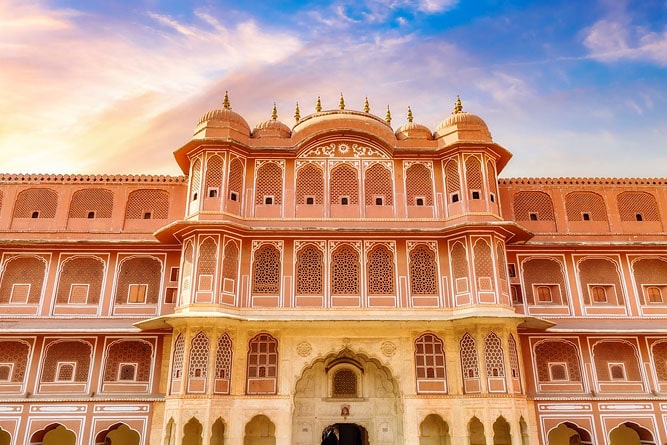
Attractions in the City Palace, Jaipur
Diwan-i-Aam: Once used by Rajput rulers to hold public meetings, this part of the palace is now converted into a museum displaying a wide collection of carriages, carpets, howdahs and portraits of the royal family.
Diwan-i-Khas: As the name suggests, the Diwan-i-Khas was used for private gatherings. It has an open courtyard. Presently, people visit this part of the palace to see two sterling silver vessels.
Mubarak Mahal: Decorated with beautiful murals and frescos paintings, the Mubarak Mahal was used by the royal family to welcome guests.
Pritam Niwas Chowk: The literal meaning of Pritam Niwas Chowk is Courtyard of the Beloved. This area has four gates that represent different seasons.
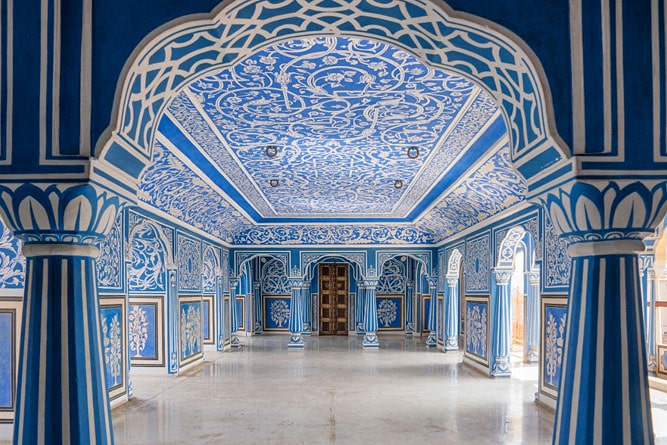
Entry fee and timings
Including camera charges, the entry fee to the palace is ₹200 for Indian nationals and ₹700 for foreign tourists. If you are a student, you are eligible for a discount on providing a valid student id card.
The Jaipur City Palace is open on all days of the week. The gates of the palace open at 9:30 am and close at 5:00 pm.
Facts and tips about the City Palace, Jaipur
- While some parts of the palace are converted into a museum, the other part is still being used as the residence of the former Jaipur ruler.
- Among the four gates of the palace, you can enter using three of them. The Tripolia gate is not accessible to visitors. This gate is reserved for entrance only by the royal members of the family.
- A couple of sterling silver jars housed in the City Palace hold a world record in the Guinness Book of World Records. They are the largest sterling silver vessels in the world. It is believed that the water from the river Ganga, which is considered holy by Hindus, was stored in these vessels.
How to reach the City Palace, Jaipur
The City Palace is the main landmark of Jaipur. Most of the other famous tourist attractions such as Hawa Mahal and Jantar Mantar are situated in the same area.
See location on Google Maps
Other attractions near the City Palace, Jaipur
- Jantar Mantar - 130m
- Hawa Mahal - 500m
- Albert Hall Museum - 2.5 km
- Amber Palace (Amer Fort) - 8.2 km
- Nahargarh Fort - 14 km
FAQs about the City Palace, Jaipur
1. Does the royal family of Jaipur still live in the City Palace?
Yes, the royal family of Jaipur still resides in a part of the City Palace called Chandra Mahal. The mahal has seven floors and a roof that offers a panoramic view of the city. It is at the heart of green gardens and a lake. This part of the palace is not accessible to the public.
2. What are some of the things not to miss in the City Palace museum?
The City Palace museum is a house of some of the finest arms in the country. From double-edged cutters to arrows of different sizes and shapes, you can find a lot on display. The main attraction is the 5 kg sword belonging to Maharaja Man Singh. There are also baggis or carriages on display that were used by the royal family for transportation. One baggi that gathers a crowd is Victoria Baggi. This was a gift from the Prince of Wales to the Maharaja in the year 1876.
3. Am I allowed to click pictures inside the City Palace?
Yes, you are allowed to click pictures and shoot videos inside the City Palace at a nominal charge of ₹50 for photography and ₹150 for videography.
4. When is the best time to visit the City Palace?
Any winter month from October to March is good for touring Jaipur. If you visit the city in summer, then try to reach the city palace in the early morning hours or after 3:30 pm to be able to visit all parts of the palace comfortably.
